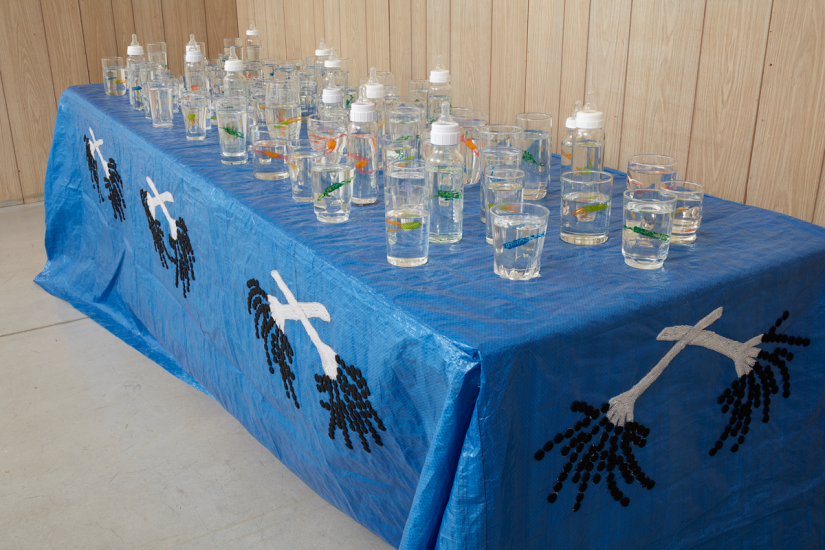OVERVIEW
The McLean Centre for Indigenous & Canadian Art features some of the best art from our Indigenous and Canadian collections, presented in an engaging and accessible new showcase. Following a complete renovation of the individual galleries and the reinstallation of art, the McLean Centre reopened for Canada Day, 2018.
“The re-opening of the McLean Centre is an exciting opportunity to place artists at the core of the installations, to tell stories from new perspectives and engage visitors with the very best works – both new and familiar – from the Gallery’s Indigenous and Canadian collection.” - Georgiana Uhlyarik, the Fredrik S. Eaton Curator, Canadian Art, at the AGO.
Over the next five years visitors will see artwork by Indigenous artists such as Carl Beam, Ruth Cuthand, Robert Houle, Robert Markle, Kent Monkman, Norval Morrisseau, Daphne Odjig, Jessie Oonark, Jane Ash Poitras and Jeff Thomas, among others, along with work by Inuit artists Shuvinai Ashoona and Annie Pootoogook. Canadian artists include Florence Carlyle, Emily Carr, June Clark, Lawren Harris, Jamelie Hassan, Kazuo Nakamura, Joanne Tod, Joyce Wieland and many more. The installations will change over time and new artists will be introduced.
“The McLean Centre revitalization enables the AGO to showcase contemporary Indigenous art leading conversations with Canadian art, and to highlight critical discussions about identity, the environment, history and sovereignty.” - Wanda Nanibush, Curator, Indigenous Art, at the AGO.
Excitingly, the Centre also includes many new dedicated spaces for Indigenous art, with four spaces devoted to Inuit art specifically. This reinstallation was a part of the larger Gallery-wide Look:Forward reinstallation project, launched in 2017.




